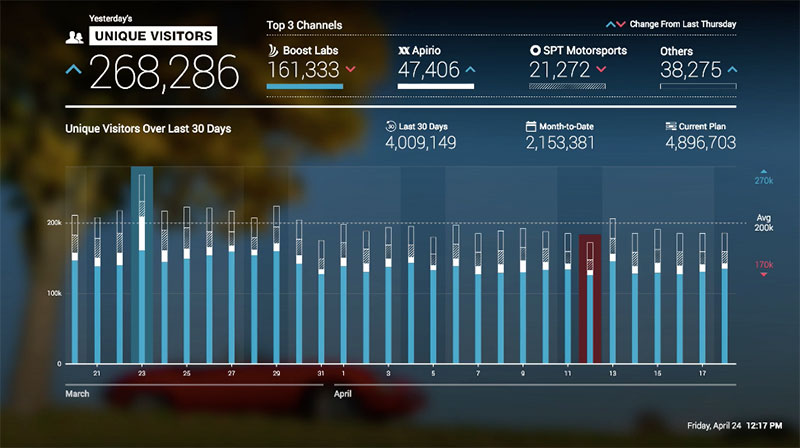
As CIO, CMO, CDO or executive director, it is your responsibility to gather and interpret data that will help drive profitability and growth. You gather data from different sources…web analytics, social media platforms, CRMs and inbound marketing tools. You also receive data from different departments in the form of Excel spreadsheets, Powerpoints and Word documents. You dread the grunt work that goes into exporting the data and creating “nice” Powerpoint or Prezi decks for your executive meetings. You also dread last minute changes to the data because the meeting has been delayed by a week and the information needs to be accurate. Does this sound familiar?
What if you could save time and resources each month or quarter prepping your data? What if the data could be real-time, so you didn’t have to sweat last minute changes? What if you could present the data in a way that catches the eye of stakeholders each time?
This can be done through an information dashboard. An information dashboard is simply a data visualization web application used as a tool to help you present your data consistently and cohesively in real-time. It helps you and your stakeholders understand key performance indicators (KPIs) that drive your business decisions.
Benefits of an Information Dashboard
- Reduce Unnecessary Questions and Confusion – An information dashboard is meant to be customized to your brand, objective and data. It pulls and segregates the most important data from your sources in real-time and converts it into static or interactive visuals. By pulling only necessary data, it helps prevent unnecessary questions, rabbit trails and confusion, so your stakeholders can make better decisions for the company.
- Minimize “I’ll get back to you” – How many times do stakeholders ask a question that you can’t answer in the moment? In turn, you have to make a note to answer the question in the form of an email with a new attachment. An information dashboard brings new light to the way stakeholders see the information because you have the ability to segment data in real-time. Using real-time data will lessen the number of times you say, “I’ll get back to you on that.” Minimize the email trails with multiple versions of the data floating around.
- No more “I need it now!” – How many times have you had to stop what you are doing to pull and compile data for a last minute report or request? The risk for error or inaccurate data is higher, because you are gathering it in a rush. Because the information dashboard is pulling from the data’s source in real-time, stakeholders can access the dashboard, see the data and export reports without having to sort through raw data.
This is just the tip of the iceberg with information dashboards. Investing in an information dashboard will prove beneficial to your company’s productivity, profitability and even moral as a whole.
Let’s start the conversation today!
